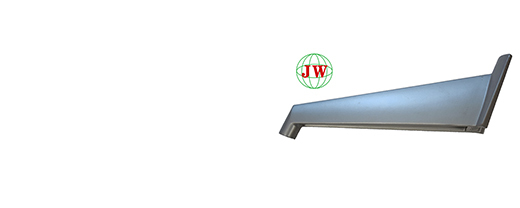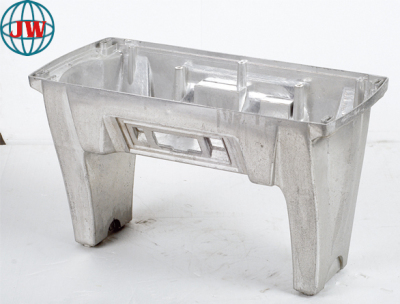
The Thriving and Evolving World of Die Casting Molds Industry
2025-05-09 15:00
The Thriving and Evolving World of Die Casting Molds Industry
In the intricate web of modern manufacturing, the die casting molds industry stands as a linchpin, underpinning the production of countless high - quality metal components across diverse sectors. From automotive and aerospace to consumer electronics and industrial machinery, die casting is a highly efficient manufacturing process, and the molds used in this process are the unsung heroes that enable the creation of precise, complex, and durable parts. As technology advances and market demands shift, the die casting molds industry is experiencing significant transformations, marked by innovation, increased efficiency, and a growing focus on sustainability.
The Foundation of Die Casting: Molds
At the core of the die casting process lies the die casting mold, a sophisticated tool that serves as the blueprint for the final component. These molds are typically made from high - strength tool steels or hot - work die steels due to their ability to withstand the intense heat, pressure, and wear associated with the injection of molten aluminum, zinc, or magnesium alloys into the mold cavity. The design and quality of the mold directly impact the precision, surface finish, and overall integrity of the die - cast part. A well - engineered mold can produce parts with tight tolerances, intricate details, and thin walls, which are essential in industries where product performance and aesthetics are paramount.
Advanced Design and Engineering
The design phase of die casting moldshas undergone a remarkable evolution with the advent of advanced computer - aided design (CAD) and computer - aided engineering (CAE) technologies. Designers can now create highly detailed 3D models of molds, simulating the entire die casting process virtually. This allows them to analyze factors such as molten metal flow, solidification patterns, and potential areas of porosity or shrinkage within the mold cavity. By identifying and rectifying these issues in the design stage, manufacturers can significantly reduce the time and cost associated with mold prototyping and production. CAE simulations also help optimize the placement of gates (the entry points for molten metal) and vents (the outlets for air and gases), ensuring smooth metal flow and minimizing the risk of defects in the die - cast parts.
Manufacturing Techniques: Pushing the Boundaries
The manufacturing of die casting molds has also seen remarkable advancements. Computer - numerical control (CNC) machining has become the standard for producing mold components with high precision. CNC machines can accurately cut, mill, and drill complex geometries into the mold materials, ensuring that the final mold meets the exact specifications required for the die casting process. Additionally, electrical discharge machining (EDM) is widely used, especially for creating intricate details and fine textures on the mold surfaces that are difficult to achieve through traditional machining methods. EDM works by using electrical discharges to erode the mold material, allowing for the production of highly detailed and precise mold cavities.
The integration of 3D printing technology, also known as additive manufacturing, is another game - changer in the die casting molds industry. 3D printing enables the rapid production of mold prototypes, allowing for faster design iterations and reducing lead times. In some cases, 3D - printed molds are even being used for low - volume production runs, providing manufacturers with greater flexibility and the ability to quickly respond to changing market demands. Moreover, new materials and coating technologies are being developed to enhance the performance and lifespan of die casting molds. For example, advanced surface coatings can improve the mold's resistance to wear, corrosion, and thermal fatigue, extending its service life and reducing maintenance costs.
Industry 4.0 and Smart Manufacturing
The concept of Industry 4.0, with its emphasis on automation, connectivity, and data - driven decision - making, is having a profound impact on the die casting molds industry. Internet of Things (IoT) sensors are being integrated into die casting molds and associated equipment to monitor critical parameters in real - time. These sensors can track variables such as mold temperature, pressure, and wear, collecting data that can be analyzed using artificial intelligence (AI) and machine learning (ML) algorithms. This data - driven approach allows manufacturers to predict mold failures, optimize the die casting process, and improve overall productivity. Robotics is also playing an increasingly important role in the handling and assembly of die casting molds, ensuring greater accuracy and efficiency in the manufacturing process.
Sustainability and Environmental Considerations
As environmental concerns grow, the die casting molds industry is also taking steps towards greater sustainability. Manufacturers are focusing on reducing waste and energy consumption during mold production. Recycling of scrap materials generated during the machining and manufacturing of molds is becoming more common, helping to conserve resources and reduce the environmental impact. Additionally, efforts are being made to develop more energy - efficient manufacturing processes and to use eco - friendly materials wherever possible. The long - term goal is to create a more sustainable and environmentally friendly die casting molds industry that can meet the needs of modern manufacturing while minimizing its ecological footprint.
Challenges and Opportunities
Despite its many achievements, the die casting molds industry faces several challenges. Intense global competition, rising raw material costs, and the need to keep up with rapidly evolving technological advancements pose significant hurdles. However, these challenges also present opportunities for growth and innovation. The increasing demand for lightweight and high - performance components in industries such as electric vehicles and aerospace is driving the need for more advanced die casting molds that can produce complex parts with superior quality. Moreover, the growing trend towards customization and shorter product life cycles requires die casting mold manufacturers to be more agile and responsive, further fueling the demand for innovative design and manufacturing solutions.
In conclusion, the die casting molds industry is at a critical crossroads, poised for continued growth and transformation. Driven by technological innovation, the adoption of Industry 4.0 principles, and a commitment to sustainability, the industry is evolving to meet the ever - changing demands of modern manufacturing. As die casting remains an essential process for producing high - quality metal components, the role of die casting molds will only become more crucial in the years to come, shaping the future of manufacturing across multiple industries
Get the latest price? We'll respond as soon as possible(within 12 hours)












